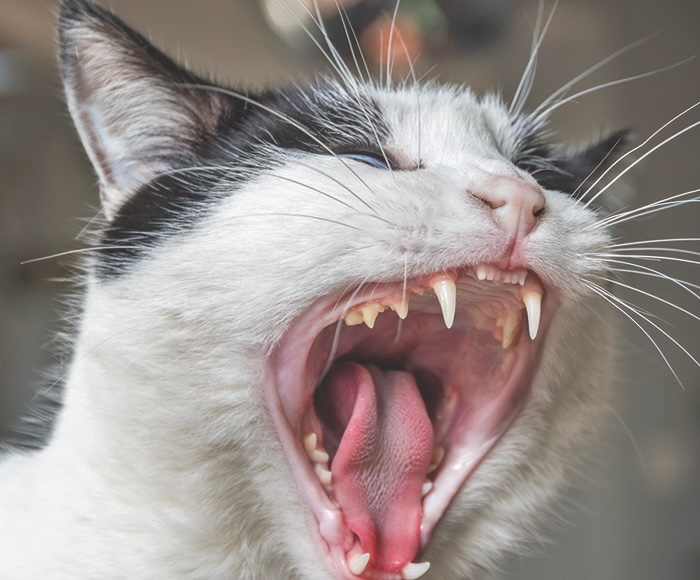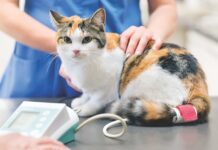We get it. Dental cleanings are expensive. It can be tempting to put off treatment for broken or diseased teeth if your cat is still eating. But in the long run, delaying dental care just makes things worse for both your cat and your wallet.
“It is unlikely that dental disease will be a primary cause of a cat’s death,” says Leni K. Kaplan, MS, DVM, senior lecturer at Cornell University’s College of Veterinary Medicine. “The infection and pain associated with dental disease, though, may lead to other health problems that can eventually threaten the cat’s life.”
Bad Teeth = Bad News
Studies have found that anywhere from 50% to 90% of adult cats have periodontal disease. After all, our cats are not brushing and flossing on their own (more on this later). Your cat may just have some mild gingivitis and calculus buildup now, but over time this can and will progress to more severe periodontal disease.
Periodontal disease itself is characterized by inflamed, painful gums, and bacterial infections that damage the tissues surrounding the teeth.
Cats can also suffer from feline odontoclastic resorptive lesions (FORLs) or stomatitis. With FORLs, the cat’s immune system attacks the teeth and breaks them down. Stomatitis, characterized by severe inflammation of the whole mouth, including the gums, cheeks, and tongue, is believed to be caused, at least in part, by an immune response to the buildup of plaque on the cat’s teeth.
None of these conditions are fun for your cat. They are painful and can affect your cat’s ability to eat normally. Chronic inflammation and infections wreak havoc on your cat’s immune system, and can lead to systemic infections or illnesses.
Dental Prophylaxis Is Worth It
The best way to help your cat? Address dental disease early, before it progresses. “I have not had any clients regret a dental procedure,” says Dr. Kaplan. “Everyone is usually impressed with how well their cat is doing. Most owners do not notice an improvement in eating per se. The cats are usually eating just fine despite their dental disease, but they notice them being more active, visiting places they haven’t been in a while, like jumping up on the owner’s desk, playing with toys, and being more social.”
Cats are stoic. They hide pain and discomfort. In most cases, by the time your cat shows symptoms of dental disease, it will likely have progressed to a point where it requires more extensive (and expensive) treatment.

Preventive Care
Once your cat has had a dental procedure to remove infected or damaged teeth and clean and polish healthy teeth, it is time to protect that clean slate. This goes for kittens, too.
“I always educate clients about the importance of daily tooth brushing to maintain oral health,” says Dr. Kaplan. “You need to get the cat used to having their mouth/face touched, lips lifted, and so on before you start to brush. Cats don’t know what tooth brushing is, and if we scare them by trying to brush from the get-go, they will not allow it or will make it a struggle. I encourage owners to start by touching the cat’s face and lips and then giving a treat for positive reinforcement and building from there.” Flavored, enzymatic pet toothpastes are popular with many cats, and it is important to only use toothpaste that is designed for use in cats (human toothpaste can be toxic to cats).
Choose your toothbrush carefully. “Even the smallest toothbrushes may be too big for a cat to get comfortable with brushing,” says Dr. Kaplan. “In these cases, I advise wrapping a textured cloth, such as cheese cloth, around a finger and using your finger as a toothbrush.”





